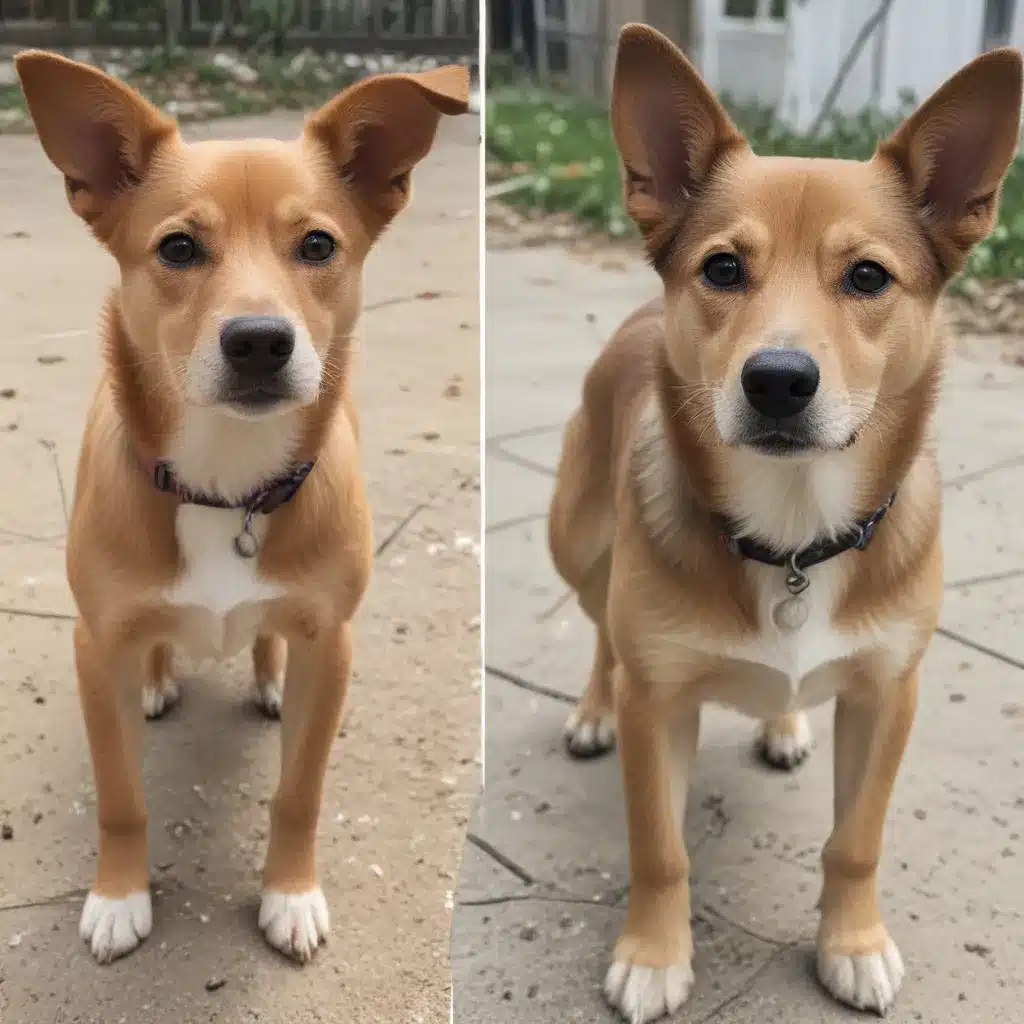
A Fearful Start
It was a dreary autumn day when I first met Misty, a six-month-old Bichon pup who had been with her family since the ripe old age of seven weeks. As I joined them on their daily walk, I couldn’t help but notice the pup’s timid demeanor. Misty practically hid behind her owner, her ears pinned back as she scanned the environment for any potential threats. It was clear from the get-go that this little fluffball was a bundle of nerves.
Misty’s story was not unique, unfortunately. Many rescue dogs come with a history of fear and uncertainty, having spent their formative weeks or months in less-than-ideal conditions. Puppy mills, backyard breeders, and even well-meaning but inexperienced owners can all contribute to a dog’s skittish behavior. And it’s not just newcomers to the household that struggle – even dogs that have been with their families for years can develop fears and anxieties over time.
Take Buddy, for example – a two-year-old Shepherd mix who, by all accounts, was a great family dog. But when strangers came to visit, his true colors emerged. Buddy would bark and lunge, alternating between approaching the visitor and retreating, as if to say, “You big scary thing, don’t make me come over there!” Clearly, Buddy was uncomfortable around new people, and wished they would just leave him be.
As one trainer noted, “In short, Buddy is uncomfortable around new people, and wishes they’d just leave.” The same could be said for Misty and her fear of the great, wide world. While it would be wonderful if we could simply explain to them that there’s nothing to be afraid of, we all know that dogs can’t exactly understand our words. They hear little more than the classic “wah-wah-wah” from the Peanuts cartoons.
A Confident Companion
But what if we could show them, rather than tell them? That’s where the idea of using a confident, dog-friendly pup as a role model comes into play. As the trainer explained, “Dogs learn by observation. And they most certainly learn things from each other, both good and bad.”
Imagine, for a moment, taking Misty and her timid self out for a walk, with a confident canine companion in tow. As Misty normally cowers and lags behind, her new friend trots happily down the street, unperturbed by the sights and sounds of the neighborhood. Gradually, Misty might start to take cues from her companion, growing a little more sure-footed and less prone to hiding.
Or think about Buddy, the Shepherd mix who dreads the arrival of new visitors. If we were to invite a friend with a confident dog to come over and hang out for a while, Buddy might just pick up on his pal’s relaxed attitude and start to realize that the scary stranger isn’t so bad after all.
As one expert put it, “Dogs do mimic behavior, so living with another dog can teach them about their new life.” It’s a simple concept, really – by observing a calm, confident companion, our fearful pups can learn that the world isn’t quite as terrifying as they once thought.
Putting It into Practice
Of course, this approach isn’t a one-size-fits-all solution. As one Redditor noted, “Nothing is 100% effective with every dog.” But the trainer with years of experience strongly believes that it can absolutely help many dogs overcome their fears.
The key is to introduce the confident canine companion in a controlled, positive environment. Maybe it’s taking the dogs out for a walk together, or inviting the friend’s pup over for a visit. The goal is to let the fearful dog observe their confident counterpart and see that there’s really nothing to be afraid of.
And it’s not just about having the confident dog present – it’s also about carefully managing the fearful dog’s exposure to whatever triggers their anxiety. As one guide suggests, using a long leash can help you safely introduce your pup to new sights and sounds, allowing you to quickly intervene if they start to get overwhelmed.
With time, patience, and plenty of positive reinforcement, the fearful dog can start to gain confidence and learn to be more comfortable in their own skin. It might not happen overnight, but with the right approach and a little help from a four-legged friend, even the most timid pup can blossom into a confident companion.
A Heartwarming Transformation
I’ll never forget the day I witnessed Buster’s transformation firsthand. Buster, a cocker spaniel, had multiple fear issues, including a fear of meeting new people. As I worked with him on some simple training exercises, his body language clearly showed his discomfort and anxiety.
But then, as the trainer recounted, “We let the female cocker out to join us. Viola! There is an Instant transformation as Buster, along with the other dog, jumps all over me, tail wagging, body wiggly, clearly unafraid.” It was an amazing turnaround, and a testament to the power of having a confident canine by your side.
Misty and Buddy’s stories may have started off with fear and uncertainty, but with the right approach and a little help from their four-legged friends, they too can make the transformation from shy pup to confident companion. And who knows – maybe one day, they’ll be the ones leading the way for another anxious dog in need.
In the meantime, I’ll keep spreading the word about this simple yet effective strategy. Because at the end of the day, every dog deserves a chance to live their best life – and a confident canine companion might just be the key to unlocking their true potential.

